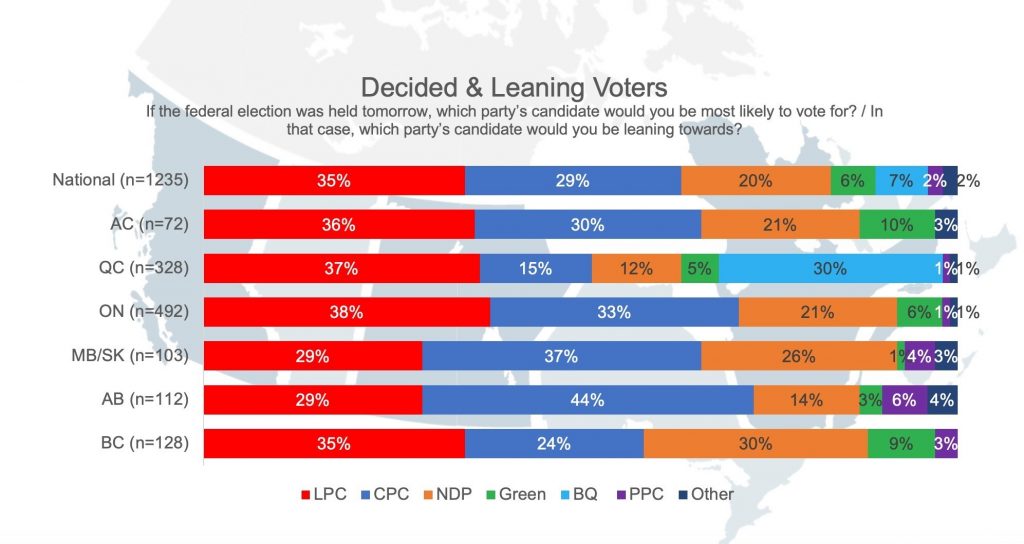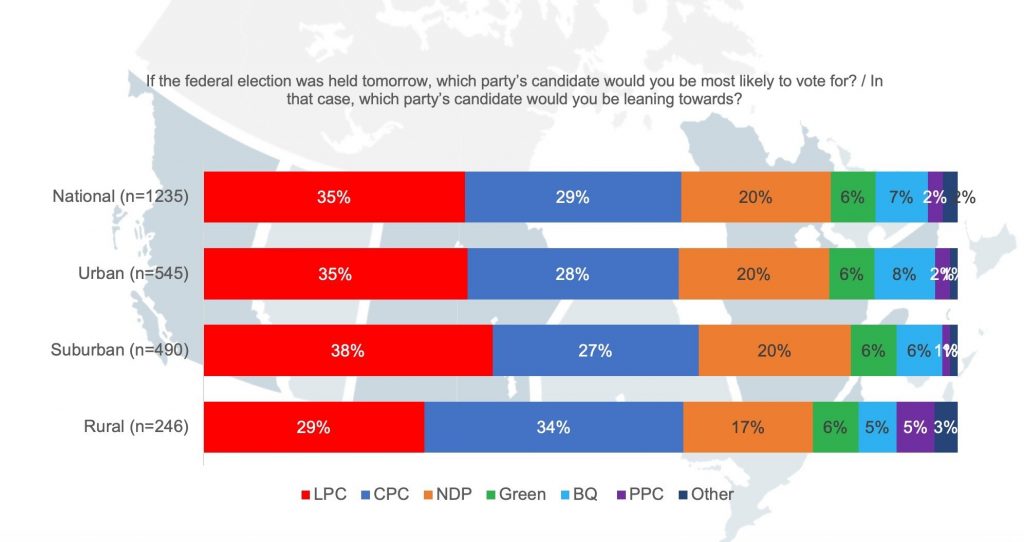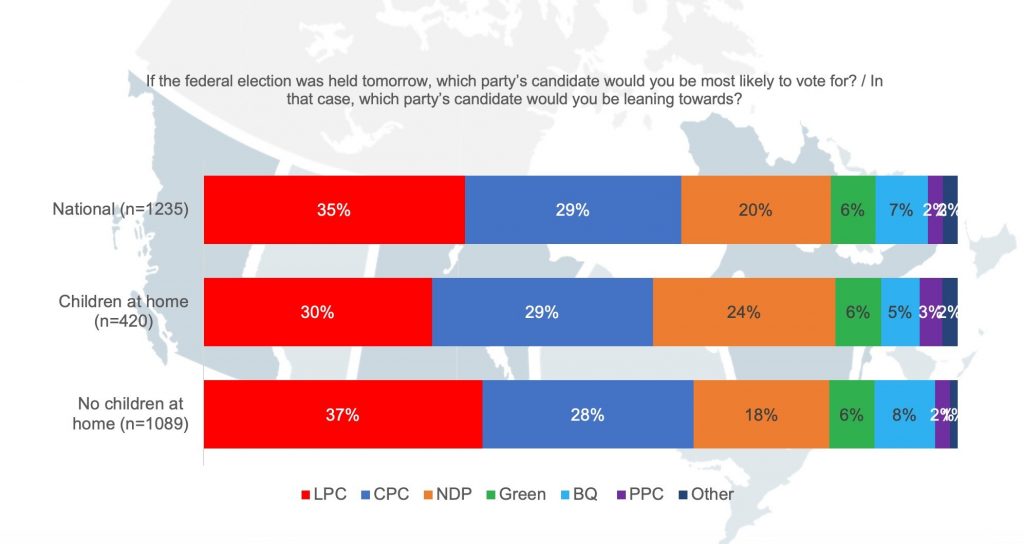Liberals lead by 6, Conservatives at 29 and NDP at 20 as the campaign begins
As the federal election campaign kicks off, the Liberals sit at 35% nationally among decided and leaning voters, followed by the Conservatives at 29% and the NDP at 20%. The Green Party would capture 6% of the vote, the Bloc 7% and the People’s Party of Canada 2%.
While the national numbers on the popular vote are often indicative of electoral results in Canada, the 2019 election provided a valuable lesson on the importance of looking at regional battles. In 2019, buoyed by the dominance in the province of Alberta, the Conservative party captured the greatest share of the national vote, but it could only translate into the second most elected Members of Parliament.
Bearing in mind this need to grasp the geographic nuances of party support, there are a number of particularly notable regional battles to monitor. In B.C., the Liberals are leading in with 35%, a marked improvement from Election Day in 2019, when they captured 26% of the vote. The Conservatives, on the other hand, begin this campaign at 24%, down from the 34% of support they garnered in the last election. The NDP holds 30% of the vote, up 6 points from Election Day in 2019.
In Quebec, the Liberals lead with 37% support among decided and leaning voters, up three points from Election Day 2019. The Bloc Quebecois’s strength has weakened somewhat, down from 32% in 2019 to 30%.
In Ontario, the Liberals maintain a lead with 38% support, but that’s lower than they managed on Election Day in 2019, when they captured 42% of the vote. A third of the province’s decided and leaning voters support the Conservatives (33%), the same proportion as in 2019. The NDP are polling slightly better than they did in the last election, up 4 points to 21%. Continued strength and gains for the NDP could mean that they manage to pick up a seat or two from the Liberals.

The race in the suburbs
Across all regions, there are also differences based upon the type of community in which Canadians live. It is no secret that suburban Canada plays an important role is helping parties form government. Currently, the Liberals lead the Conservatives by 11 points among those living in suburbs.

Parents and childcare
With the release of the Conservative platform and the party’s choice to present a different vision for child care from the Liberals, we decided to examine the differences in party support among those with and without children at home. The Liberals and the Conservatives are virtually tied among parents (30% and 29% respectively). With such closer results, the appeal of the two parties’ approaches could swing this group one way or another, though it remains to be seen if child care will be a significant election issue.

Earnscliffe Strategy Group conducted this proprietary study using a random sampling of panelists from their Leger’s online opt-in panel. The survey was conducted with 1,515 individuals from across Canada between August 13 and 15, 2021. The data was weighted to be reflective of the Canadian population by age, region, gender, education and mother tongue (QC only, FR vs non-FR) based on 2016 Census data. Since this survey was conducted using an online panel, no margin of error may be calculated.Earnscliffe follows the CRIC Public Opinion Research Standards and Disclosure Requirements that can be found here: https://canadianresearchinsightscouncil.ca/standards/
View the survey questionnaire | Download the full data tables

